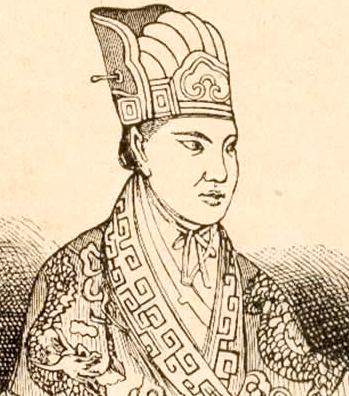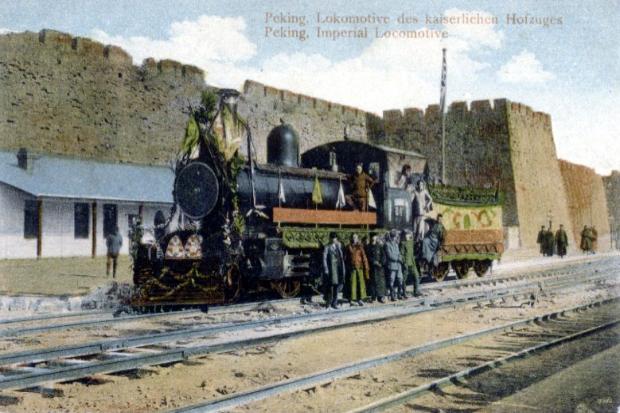What if James IV of Scotland (House of Stewart) had married Maria of Aragon instead of Margaret Tudor of England, daugher and sister to kings. Thus the crowns of Scotland and England would not eventually unite, nor Scotland and England eventually become the United Kingdom?
1488 - 1513: James IV (House of Stewart)
1513 - 1566: James V (House of Stewart) [1]
1566 - 1568: Alexander IV (House of Stewart) [2]
1568 - 1584: Charles Stewart [3]
1584 - 1621: Matthew I (House of Stewart) [4]
[1] In the year 1500, King James IV of Scotland, House of Stewart, married the Infanta Maria of Aragon, daughter of King Ferdinand of Aragon and Queen Isabella of Castile. She was 18 and he was 27. Therir firstborn, named after his father, was born in 1501. He was partially raised in the Higlands by Alexander Gordon, 3rd Earl of Huntly, and Sherrif of Inverness, which he was made in 1500. Gordon was the righthand man of the King in securing the north and west and he was trusted with helping raise the Prince. James IV wanted to insure that his son was not seen as Spanish, but as a true Scotsman, and thus the sending him to Inerness every summer from the age of four until his majority. When the King died in 1513 in battle with England, Gordon became co-Regent with Queen Maria, and sole regent when shortly after that she married Manuel of Portugual.
James V, House of Stewart, always considered himself a Highlander and was beloved by the clans. In 1519 he ended the regency and married Gordon's granddaughter, Jean Campbell, keeping Gordon as an advisor until the older man's death five years later.
Scotland was constantly at war with England during the reign of James, both during the Regency of the Earl of Huntly and when James came of age. Border skirmishes and outright wars breaking out were common. Finally in 1543 the Scottish forces won a decisive victory against the English at the Battle of Solway Moss. Afterwards a peace was enacted between James and his young cousin, King Henry IX, of England. The borders that were negotiated remain the borders between the two British kingdoms until this day. (Yep, Mary I Tudor is instead male and succeeds his father sooner.)
The final battle between England and Scotland was noteworthy in that England was securely Catholic with King Henry IX continuing his father's role as "Defender of the Faith," that is the Catholic Faith, while Scotland was more and more becoming Presbyterian and James himself 'reformed' in 1542 becoming Presbyterian. Quickly after that the entire country converted. James identified with the Highlander Presbyterians over the lowland Catholics. The battle was an attempt by England to force Scotland to at least remain Catholic in the lowlands. Many of those lowlander Catholics fled to England after the victory of Solway Moss and the realization that Scotland was not going to give up the Reformation.
James died in his sleep at the age of 65 after complaining of headaches the night before He was survived by his wife, his children, and a country secure in its Independence, its Presbtyerianism, and its Gaelic heritage.
[2] James would be succeeded by his second son Alexander, after the death of the Duke of Rothesay one year earlier. Rothesay and his wife, Barbara of Hesse, would only have three daughters before James's death: Anna, Mary, and Jean. Many feared war would break out over the princesses rights to the succession, particularly given the unpopularity of Alexander and his wife, the young Catherine Vasa.
Catherine was an almost fanatic devotee to Lutheranism and attempted to convert the Scottish court to the faith. Many reformers saw the faith as too Catholic in its traditions and saw Catherine as ruining all their hard work. However, the Queen was popular among the Catholic south, who saw Lutheranism as more tolerable. Alexander himself had the opposite problem, being accused of "having only one concern: his own enrichment". His ascension was bemoaned by the nobility, who believed his nature was antithetical to Kingship. The King's constant covert meetings with ambassadors "taking bribes and other such things".
The birth of a daughter, called Catherine for her mother, became the last straw. There were rumors that King Alexander planned on selling his young nieces to the highest bidders, which was met with revulsion due to their ages, given the eldest only recently turning 7 at the time. These rumors caught the ears of Robert McDonald, a young courtier of the Dowager Duchess of Rothesay. Fearing for his beloved mistress and her daughters, he took up vigilante justice. While the King was out riding with one of his many foreign friends, looking for new streams of private revenue, stopped at Cadzow Castle. McDonald covertly followed him in and, when the King went off alone for some heir, stabbed the King, reportedly screaming "Die you bastard". The news of McDonald's actions shocked the court, not least his former mistress, who called it "a ghastly thing". The short reign of King Alexander IV would be followed by that of his uncle, Charles.
[3] If his older brother was his father's son, raised to be a True Scotsman, by fostering him to the north, Charles was his mother's son, sharing the same name as his more illustrious cousin, Charles V, the Holy Roman Emperor, the House of Hapsburg, and as Charles I was the King of Spain. Charles did not spend time in the Highlands or among the north. When most of Scotland became Presbyterian, including his brother the king, Charles remained Catholic. However, after the Battle of Solway Moss and the clear reality that from this point on Scotland and Presbyterianism were from now on one and the same, Charles had three options. He could, like so many of his wife's relatives from the south, decamp to England, or perhaps to the Continent and the court of his cousin. He coud remain in Scotland and convert to remain a part of the Court and a True Scotsman. Finally he could choose to reject the new conditions of the kingdom, unite the southern aristocracy who were Catholic, and go to war with his brother.
Charles became Presbyterian. Like many of the other southern nobility, Charle's converion was not a deep one, but his children were still young as he'd married late in life in his early 30s, the oldest, Prince Henry, Duke of Albany, was only ten at this point. They were raised in the new Presbyterian faith and they were sincere by adulthood.
By the time of his nephew's assassination, Charles was 61, had been officially Presbyterian for over two decades, and had children and grandchildren all in this faith.
Some of the still leaning towards Catholicism in their hearts among the souther nobility, hoped that Charles would on taking the throne avenge the death of his nephew, and perhaps take up the 'compromise' of becoming Lutheran- that is Protestant in Theology but Catholic in style, especially Bishops instead of elected councils of Elders (Presbyters) governing the church, a parallel to Parliament having shared governing responsibiity with the monarch.
But Charles knew that would lead to civil war and eventually intervention by Catholic England, which would easily destroy Scotland's independence if they had allies.
So Charles remained Presbyterian, demanded that Queen Catherine convert and raise Princesess Catherine within the Covenant, and did not include the Dowager Duchess nor her daughters in the arrests that eventually led to the trial and execution of McDonald for regicide.
Charles unified Scotland after the fears of civil war and then turned its attention to overseas. He found common cause with France, despite their religious differences, in that both were threatened by the alliance between Catholic England and the Catholic Hapsburgs. This gave Scotland the breathing room to explore trade with the Indies of the Far East and the Indies of the Carribean. He also hired Jacques Cartier to explore North America for Scotland and conceived of a Scottish Colony somewhere in North America, which didn't happen until after he'd died and his heir, his grandson, Prince Matthew, Duke of Albany succeeded him.
Charles died at the ripe age of 77, still a robust man, when he was riding his horse and it tripped. He fell and broke his leg. While recovering it became infected and he did from the infection.
Matthew I in his old age.
[4] Matthew I was born the second son of Prince Henry, Duke of Albany and his wife, Princess Hedwig of Anhalt, being 'the spare' to his brother Prince Charles, Prince Matthew was educated for the possibility of one day wearing the crown, in addition to being tutored in the faith of the Scottish Kirk along side his older brother and their younger siblings.
As the Prince became older he fell in with the clique of popular young noblemen that flocked around Prince Charles, this group of young men became notorious all throughout Scotland for their epic drinking binges, wild hunting parties, and an ever changing cast of young, beautiful women. The King was dismissive of complaints from the authorities about his grandsons behavior, seeing it as part of their growing up with their peers.
The death of Charles and Matthew's father, Prince Henry, Duke of Albany in one of the last outbreaks of the Sweating Sickness bumped Matthew up in the succession, and forced the King to consider the marriages of his grandchildren.
A prestigious continental match was made for Prince Charles, for Matthew his first wife was chosen from the Scottish nobility, Barbara Hamilton, a daughter of the prestigious Hamilton family, with whom he had two children before Barbara died in a miscarriage with what would have been their third child.
King Charles began to consider a new marriage for his second grandson when another tragedy struck the House of Stewart with the unexpected death of Prince Charles, Duke of Albany when he fell out of a tower window while drunk, crashing onto the ground below.
Prince Matthew was then made Duke of Albany and the heir to the Scottish throne, and his second marriage was not with a Scottish lady but with a German Princess, Anna Magdalene of Brandenburg with whom Matthew would have three children.
Prince Matthew's partying ways slowed down considerably after the death of his first wife, and ended by the birth of his third child with Anna Magdalene, it was his second wife who encouraged his maturity, even encouraging regular church attendance, which earned the Prince (and his wife) the love of the ministers in the Church of Scotland.
The 'long-wait' for the throne ended with the death of King Charles and the rise of King Matthew I to the throne.
As the continent continued to convulse with the growing number of Protestant churches, internal schisms, and Catholic Reformation, war and violence bloomed like flowers in spring. Scotland being relatively peaceful became a haven for various Calvinist and Presbyterian preachers.
Problems for Scotland began when members of other groups within Protestantism found their way to Scotland, the various branches of Lutheranism, and more radical groups such as the Anabaptists and Nontrinitarian Christianity, these groups were not officially welcomed into the Kingdom but never the less they did gain small followings, particularly on the borderlands with England, which did allow these groups to slip between the border to preach in England and flee to the 'relative' safety of Scotland.
This did anger the English authorities, however King Matthew was able to plead ignorance of the matter to King Henry XI of England, who also had to deal with rebellion in Ireland due to England's 'Plantations' in Ireland. Keeping England distracted with internal problems would prove to be King Matthew I's main policy of dealing with the English Kingdom.
King Matthew I also served as a patron of literature and the arts in Scotland, seeing the rise of the 'Scottish Renaissance' that would outlast Matthew's reign, in addition to this King Matthew established a number of schools and two universities to promote education amongst the nobility and merchant classes.
The King also considered a colonial project in the New World, however the costs at the time were seen as too high and Scotland's low population meant that there were a lack of volunteers to risk it all in a strange new land.
However when Queen Anna Magdalene died at age 53 in 1619, it broke the King's heart, the remaining few years of his reign were spent in a gloomy court in perpetual mourning until King Matthew I was found to have passed in his sleep at age 58 in 1621, passing the crown to his ____, ______.














